Bursting with rustic texture yet built for hard work, garden sleepers turn simple sawn timber into mighty multitaskers—lifting soil, supporting slopes, shaping seats, and even anchoring pergolas. Their chunky profile is easy to cut and stack, their longevity soars once pressure-treated or oiled, and reclaimed pieces layer instant character into any style of plot. Below you’ll find twenty practical, motivation-boosting ways to let sleepers earn their keep outdoors; choose the ideas that match your space, tools, and weekend energy, and watch a humble beam transform into a long-lasting feature you’ll enjoy for years to come.
1. Raised-Bed Sleepers for Easy Veg
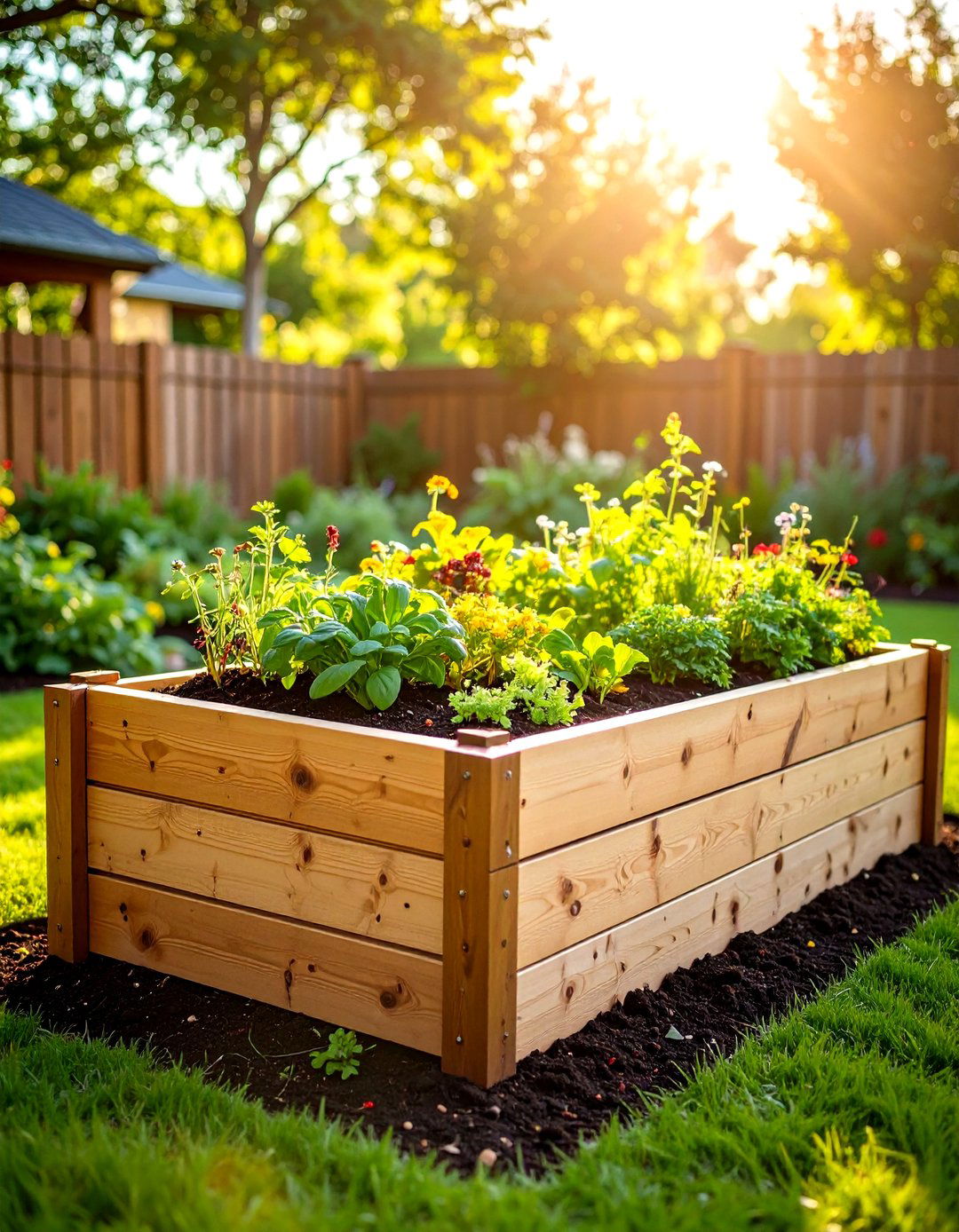
A sunlit raised bed built from sturdy sleepers instantly elevates your kitchen-garden by lifting soil above heavy ground, improving drainage and warming roots early in spring, which Suregreen’s guide notes can speed germination and cut bending strain for weary backs. Stack two layers for waist-high access, lock corners with 150 mm sleeper screws, and line the cavity with weed-control fabric before adding rich compost. Gardening experts add that the chunky timber also defines the plot and keeps moisture where crops need it most, giving reliable harvests season after season.
2. Sleeper Retaining Wall to Tame Slopes
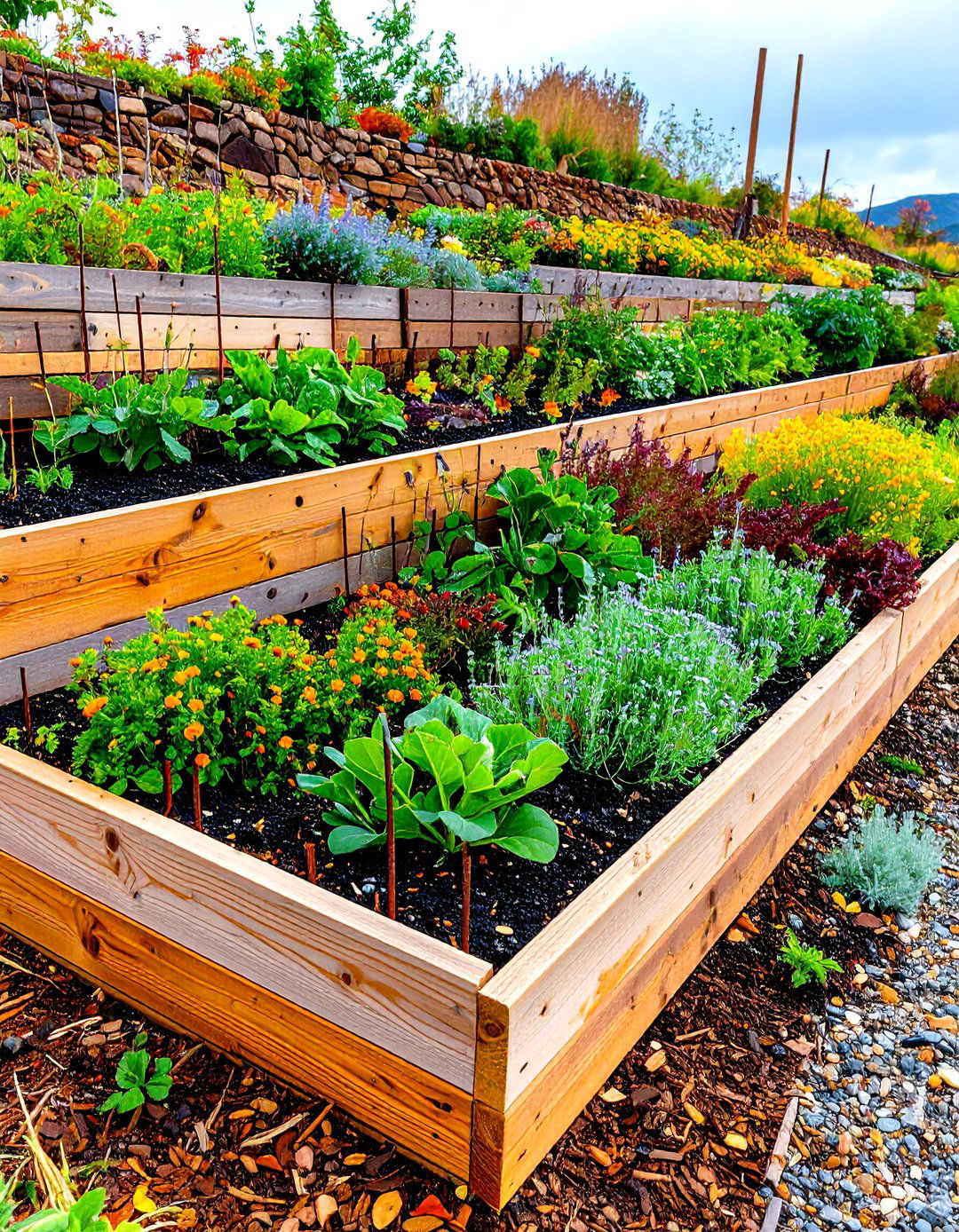
For sloping sites, sleepers form a cost-effective retaining wall when you bury the bottom third in concrete-filled trenches and back-fill with drainage gravel to relieve hydrostatic pressure—key steps highlighted in professional building checklists. Step each course slightly backward into the bank, tie rows together with rebar or dead-man anchors, and treat the exposed face with UV-resistant oil. The result is a warm, natural terrace that holds soil securely and doubles as informal seating along the new level.
3. Sleeper Steps with Gravel for Safe Climbing
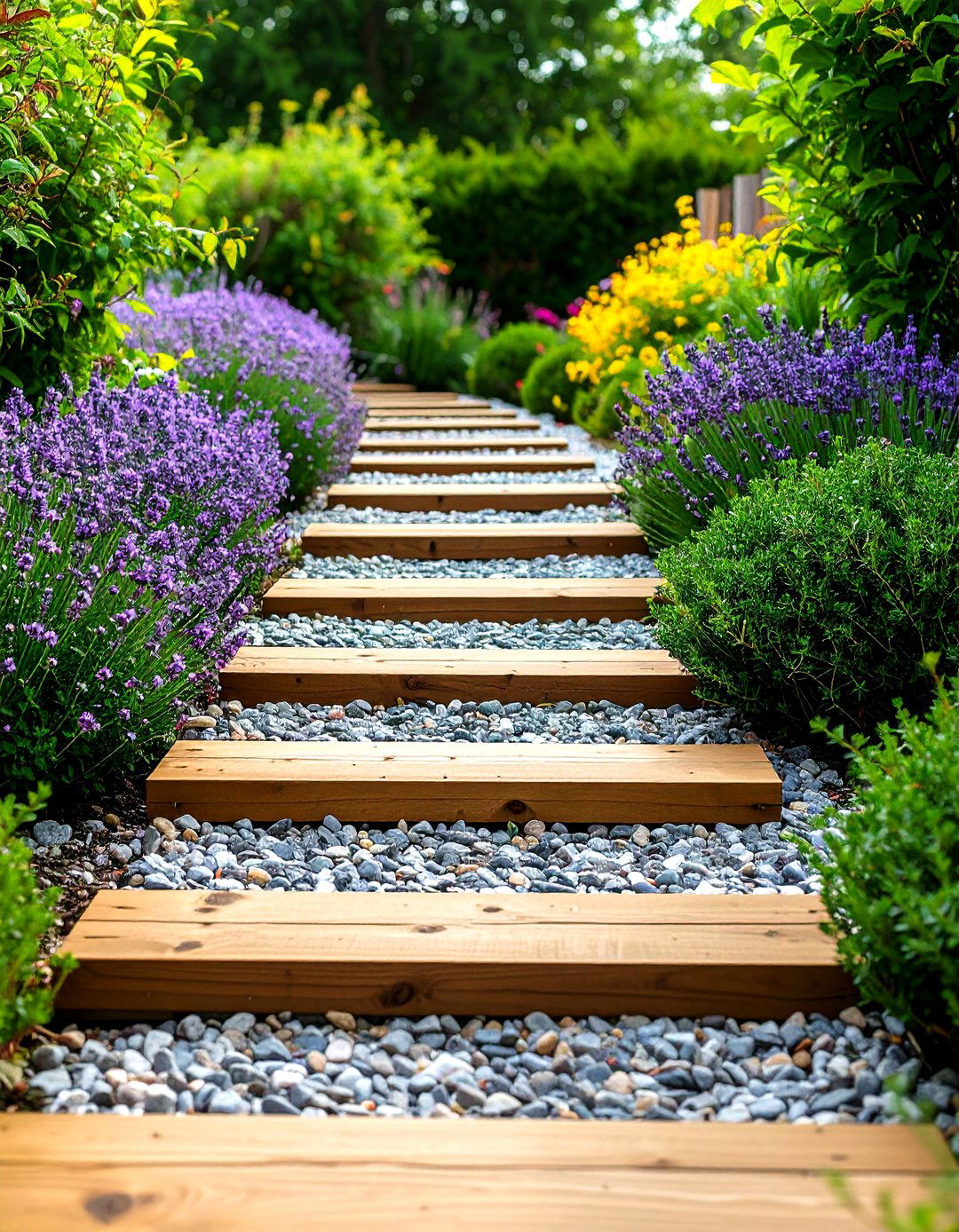
Unlike narrow stone treads, broad sleeper steps feel relaxed underfoot and blend into planting schemes. Set each timber on a compacted Type 1 base, infill risers with coarse gravel for drainage, then soften gaps with creeping thyme for fragrance. Garden design writers praise the way sleepers mellow into their surroundings while staying stable on woodland paths or modern courtyards alike.
4. Planter-Bench Combo from Sleepers
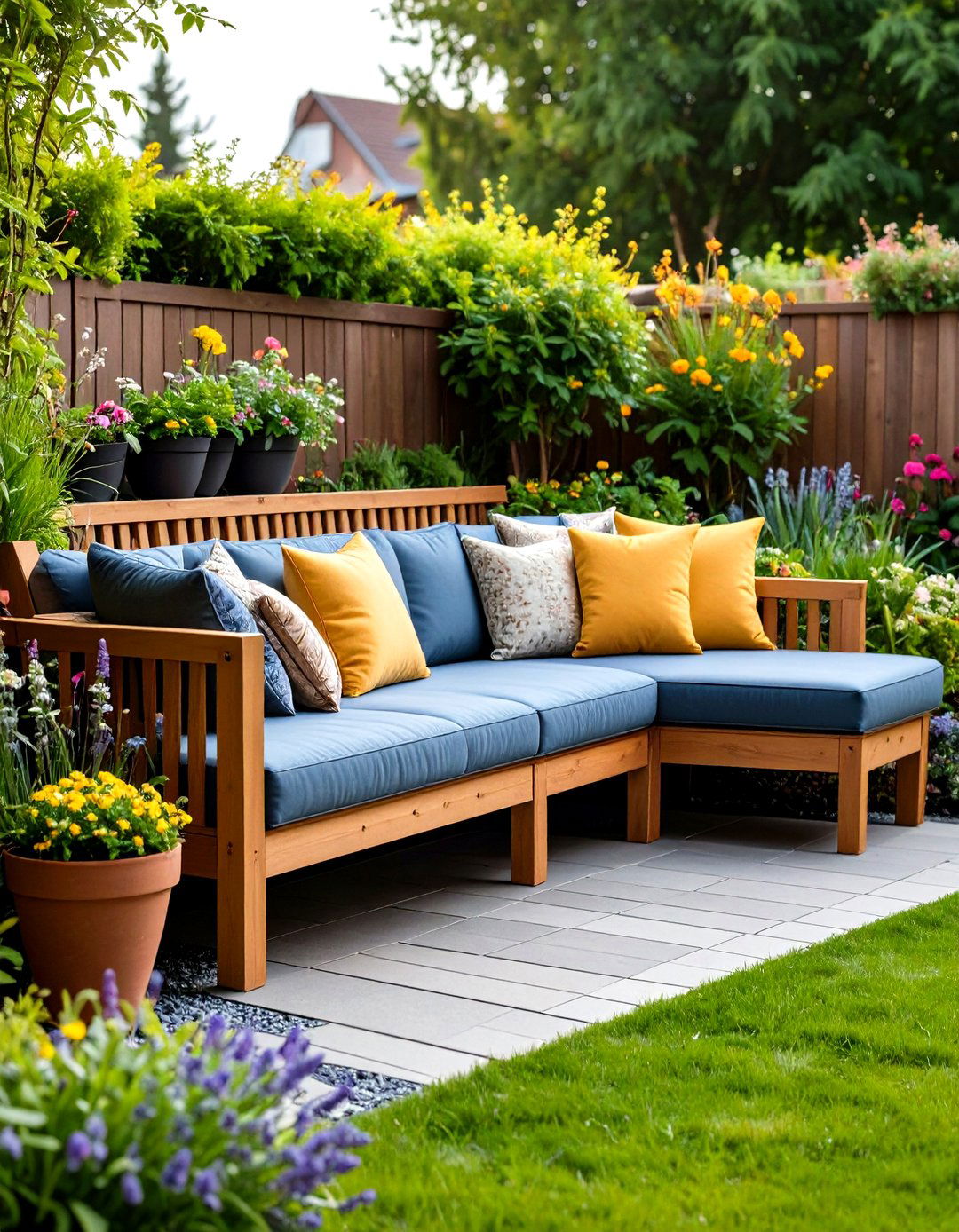
Looking to squeeze more function from every metre? A U-shaped bench framed by sleeper planters offers seating, soil depth, and strong geometry in one go. Carpenter-led makeovers show how fastening sleepers with hidden brackets creates load-bearing planters that also brace the seat back, making child-friendly lounging zones in compact yards. Sand smooth edges, seal annually with exterior oil, and drop in thick cushions for a sofa that never rusts.
5. Sleeper Edging for Crisp Borders
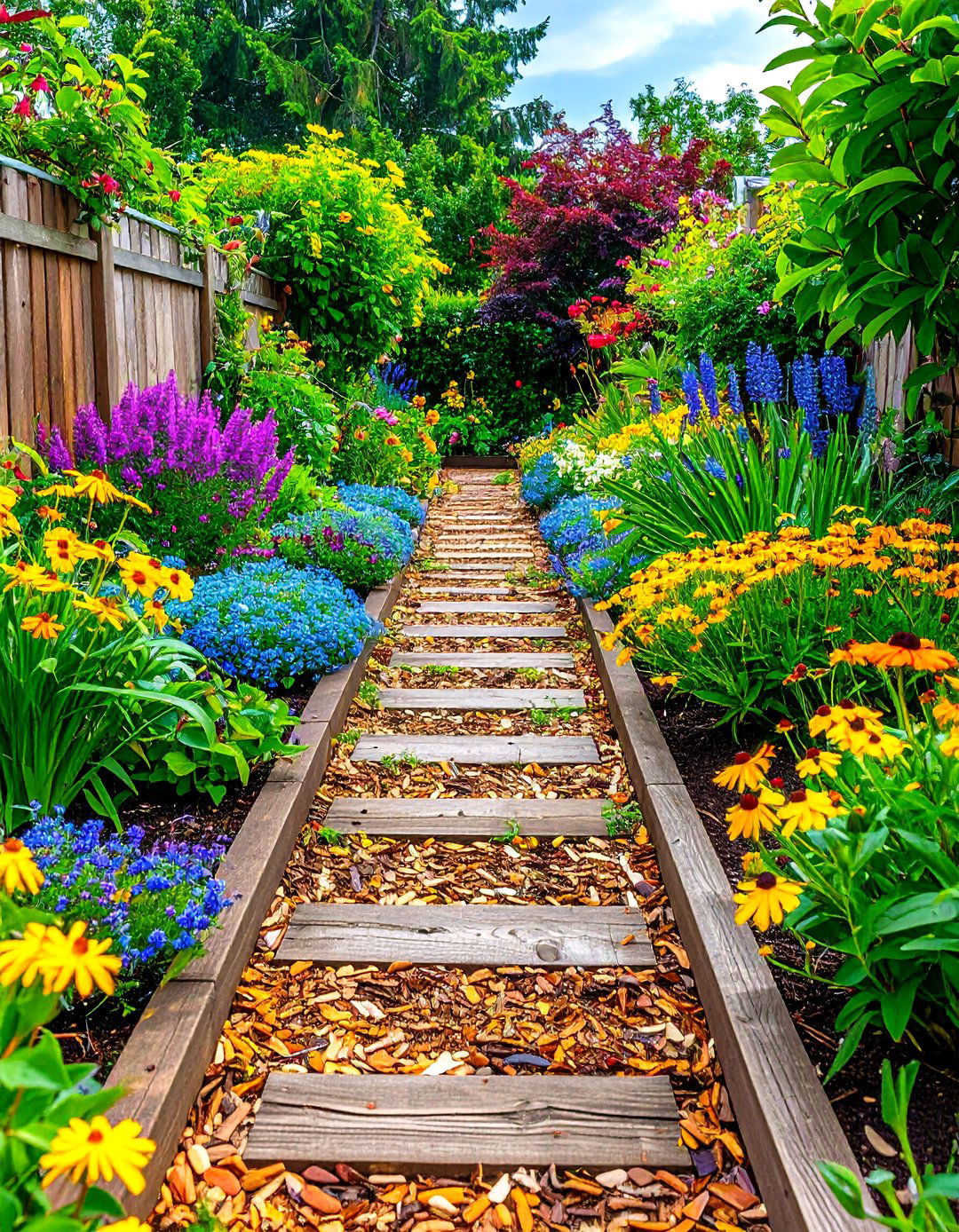
Simple sleeper edging keeps mulch off lawns and gravel off paths while giving beds a bold visual outline. Landscaping round-ups highlight its affordability and ability to follow gentle curves or sharp angles without specialist skills. Drive 300 mm timber stakes behind each board and screw through the face; once plants spill over the edge, the timber almost disappears yet still holds the line.
6. Fire-Pit Seating Ring with Sleepers
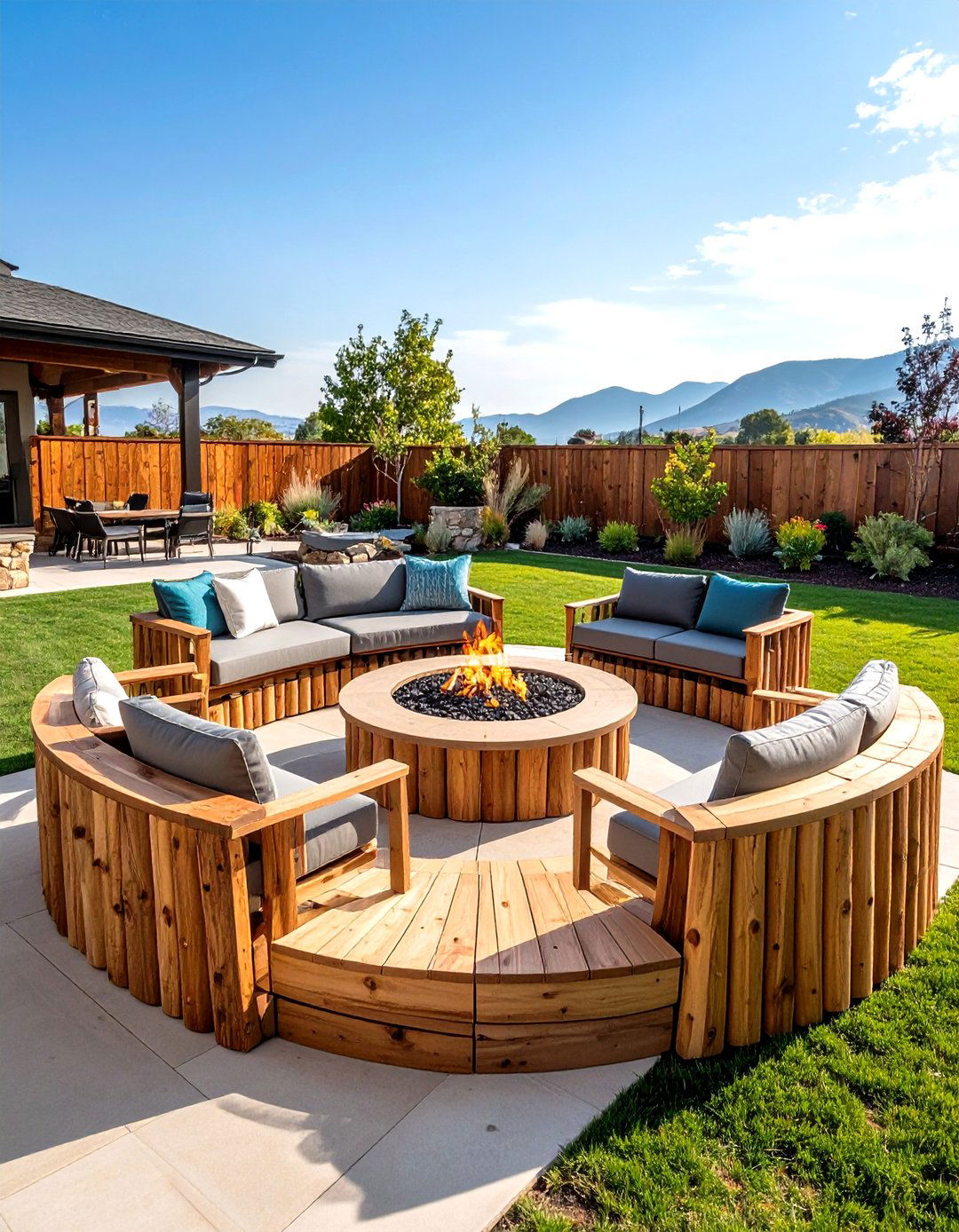
Circle a steel fire-pit with upright or laid-flat sleepers and you’ll gain an instant conversation pit that resists sparks better than soft garden furniture. Designers on outdoor-living showcases often combine reclaimed hardwood sleepers with decomposed-granite surfacing, creating a cosy hub for marshmallow nights that weathers handsomely over time. Chamfer top edges to shed rain and add removable seat pads for comfort.
7. Vertical Sleeper Planter Tower

Turn sleepers on end, notch staggered pockets with a plunge saw, and you’ve built a vertical tower for strawberries, succulents, or kitchen herbs. The stepped form, celebrated in container-gardening features, delivers eye-level colour and screens neighbouring views without needing heavy masonry. Line pockets with landscape fabric, fill with peat-free compost, and irrigate from the top so water trickles naturally through each tier.
8. Sleeper Dining Table & Outdoor Bar
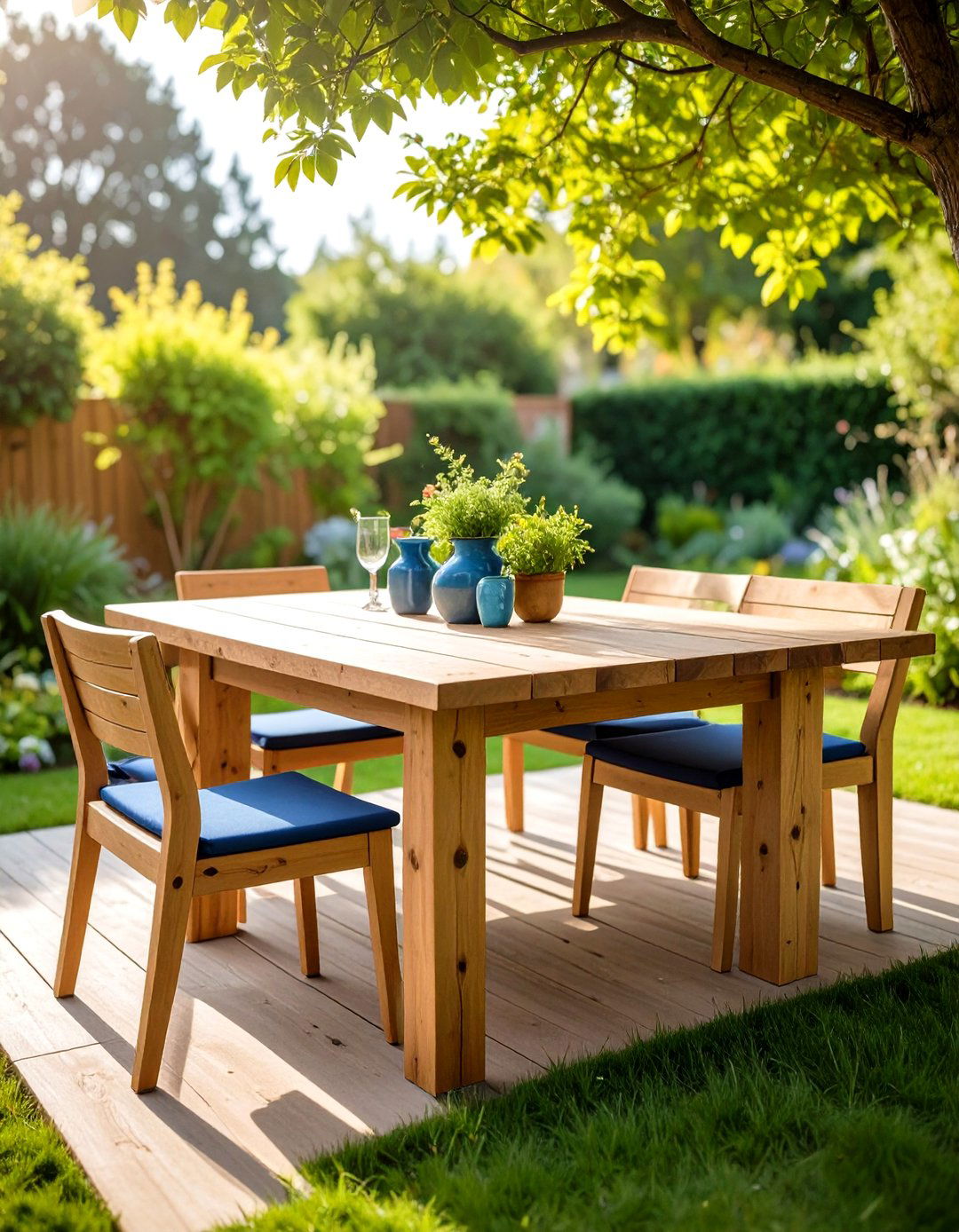
To craft an al-fresco table that laughs at wind, bolt three sleepers side-by-side for the top and two more as legs—a weekend-friendly build singled out in DIY furniture inspiration guides. Sand, oil, and add removable caster cups so you can reposition the hefty slab; for an easy bar, stand sleepers vertically, brace behind, and cap with a recycled plank.
9. Child-Friendly Sleeper Sandpit
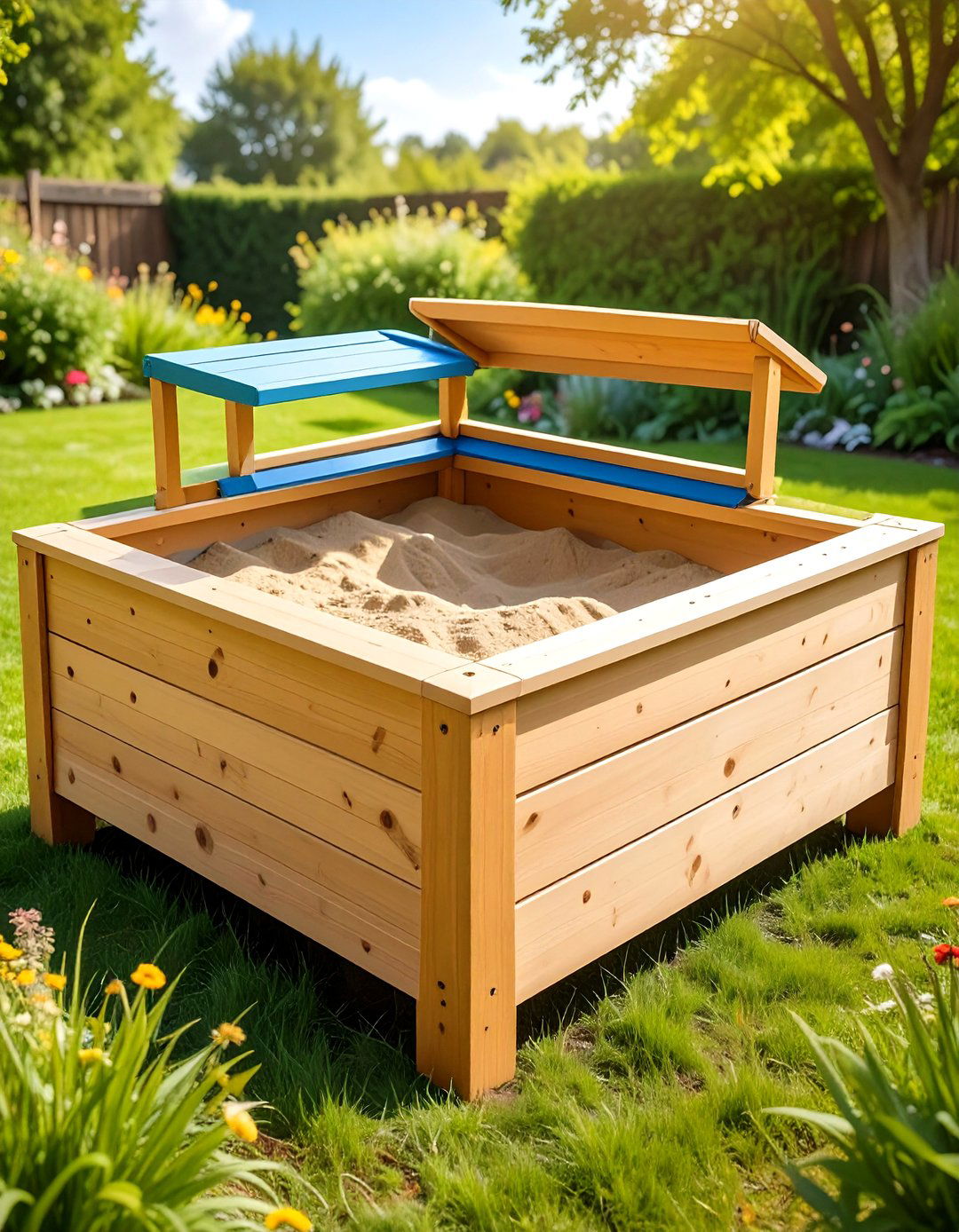
Parents at nurseries show how four sleepers laid in a square create a deep, splinter-free sandbox that stays tidy thanks to a hinged grid cover. Countersink screws, round the rim so little knees stay safe, and line the base with weed membrane before adding washed play sand for hours of excavation fun.
10. Sleeper-Framed Water Feature
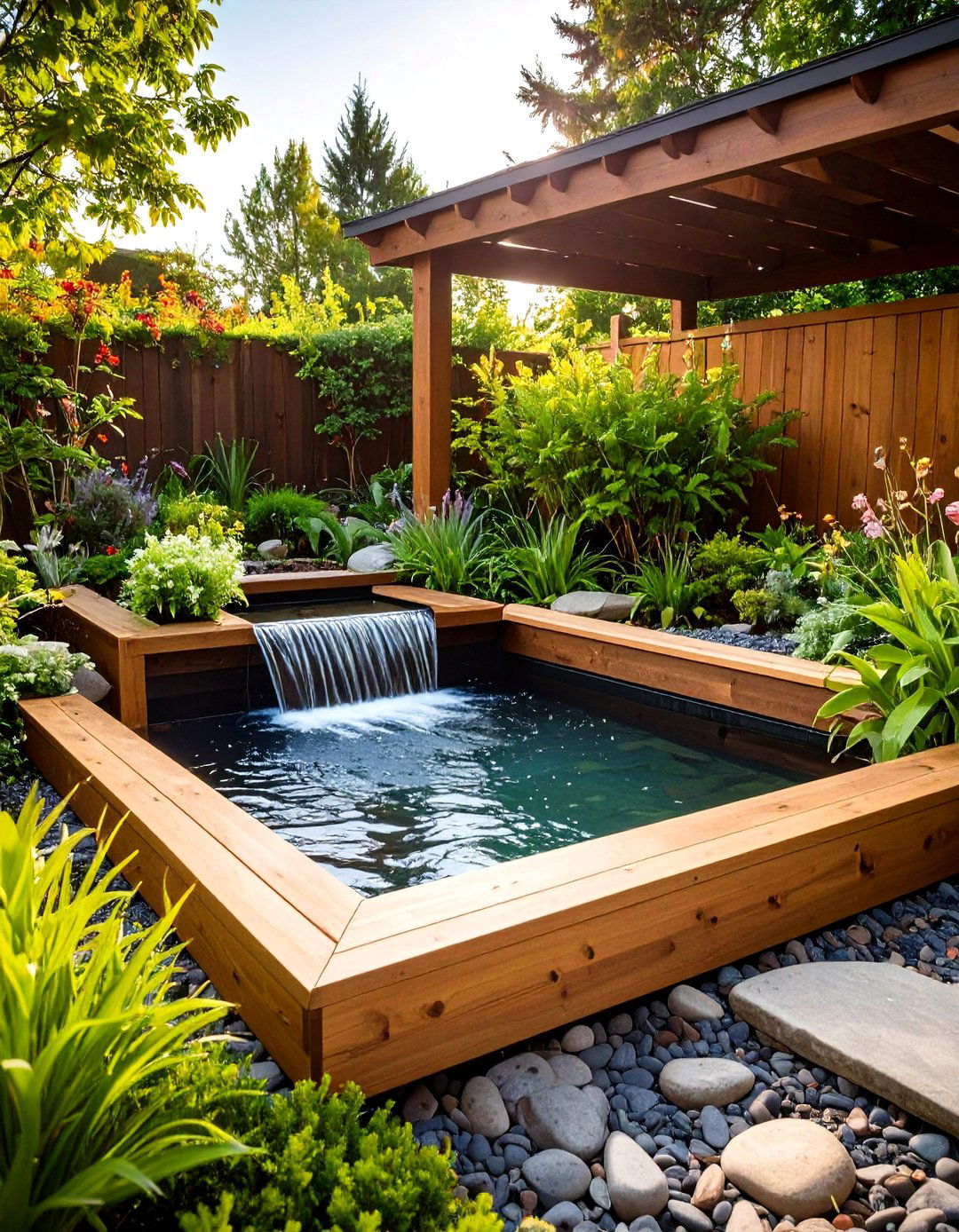
A raised pond edged with sleepers protects liners from UV, offers a seat for pond-gazing, and keeps fish safe from pets. User-submitted projects demonstrate stacking sleepers two high, inserting a butyl liner, and topping with coping strips for a sleek finish. Hide pumps behind aquatic grasses and let water spill over a mini-blade for soothing sound.
11. Three-Bay Sleeper Compost Bin
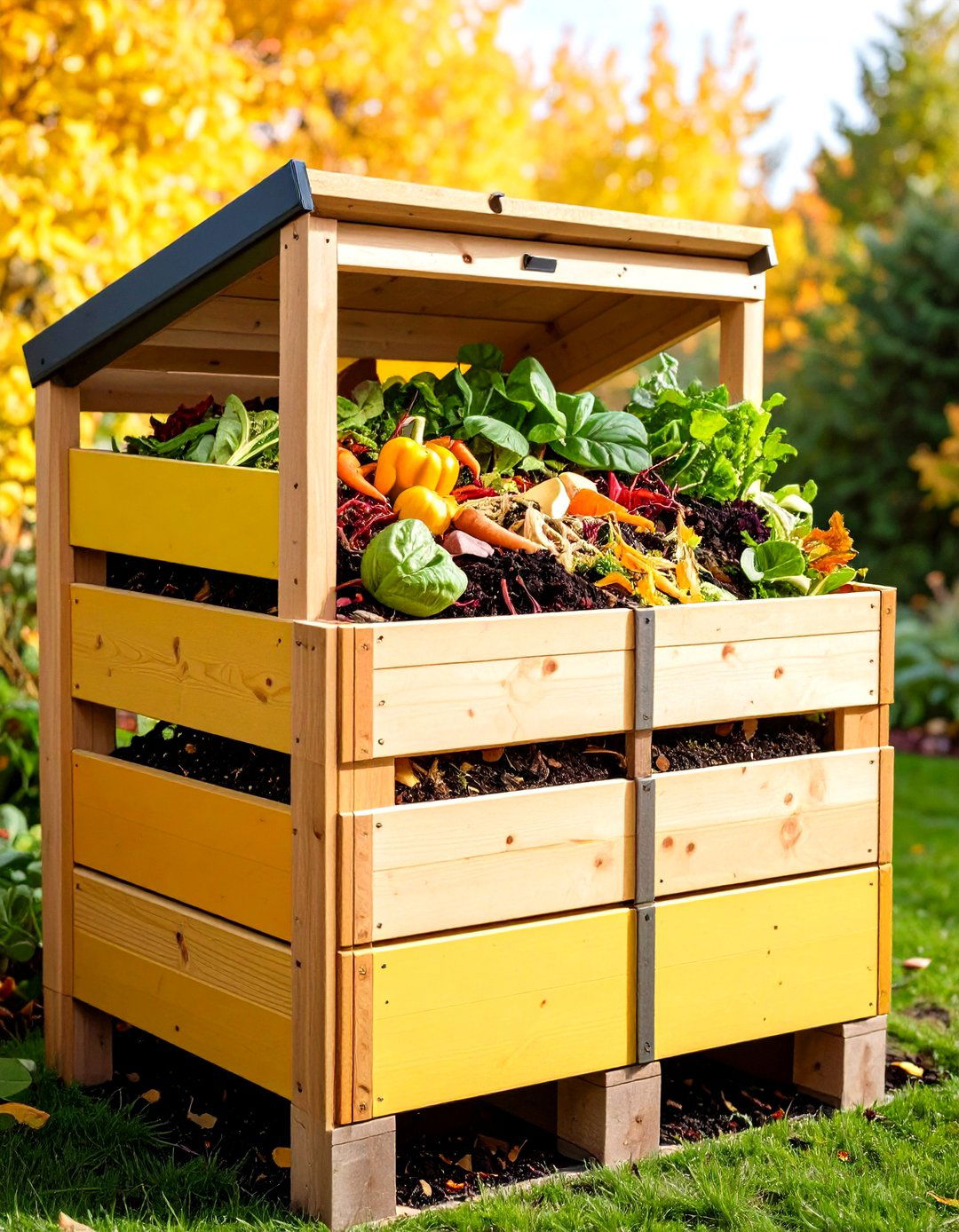
Gardeners seeking serious compost capacity convert a dozen sleepers into a triple-bay turning system: two fixed sides, one removable slat wall, and a roof of surplus boards to keep heat in. Step-by-step tutorials praise sleepers for standing up to constant moisture and the weight of decomposing material. Aerate with a fork weekly and harvest dark, crumbly hummus from the end bay each season.
12. Sleeper Pathway & Stepping Pads

Lay sleeper off-cuts like oversize stepping-stones through gravel for a rustic walkway that won’t shift. Design blogs suggest mixing widths for rhythm and edging the run with half-height sleepers to corral stones neatly. Apply clear wood preservative underneath before setting on compacted sand so each pad sits flush with the aggregate.
13. Pergola Posts Anchored with Sleepers
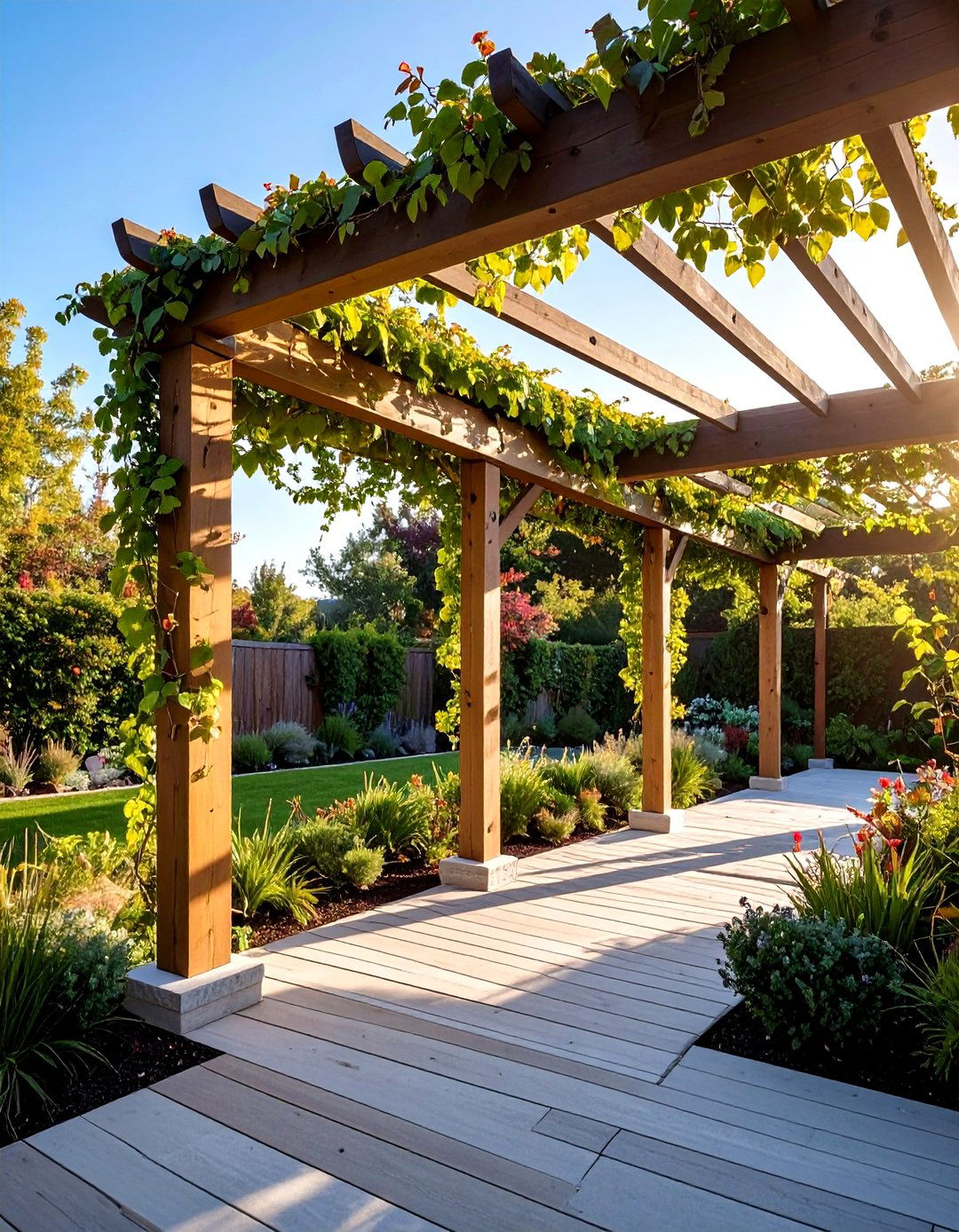
If digging footings isn’t feasible, a stack of two sleepers bolted together forms a hefty base block for slim steel shoes that hold pergola posts—a technique demonstrated in sleeper-pergola build videos. Set the blocks level on hardcore, fix posts with galvanised brackets, then train sweet-scented climbers overhead for afternoon shade.
14. Raised Sleeper Pond for Koi
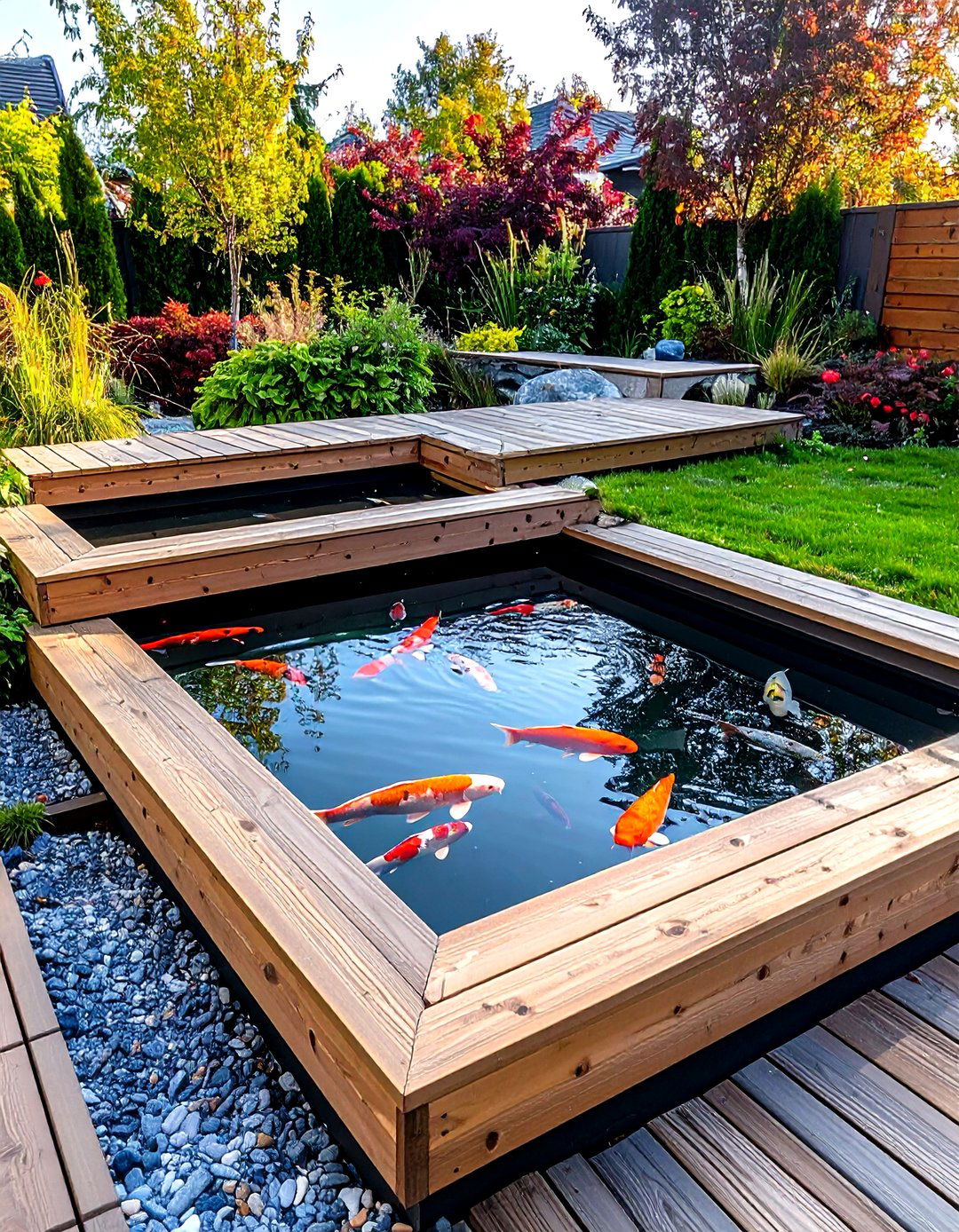
For deeper water, build a rectangle three sleepers tall, join corners with 300 mm coach bolts, and line with heavy-duty EPDM. Pond specialists note that the timber’s thermal mass steadies temperature swings, keeping koi happier year-round while offering a safe perch for feeding.
15. Low Sleeper Coffee Table Patio
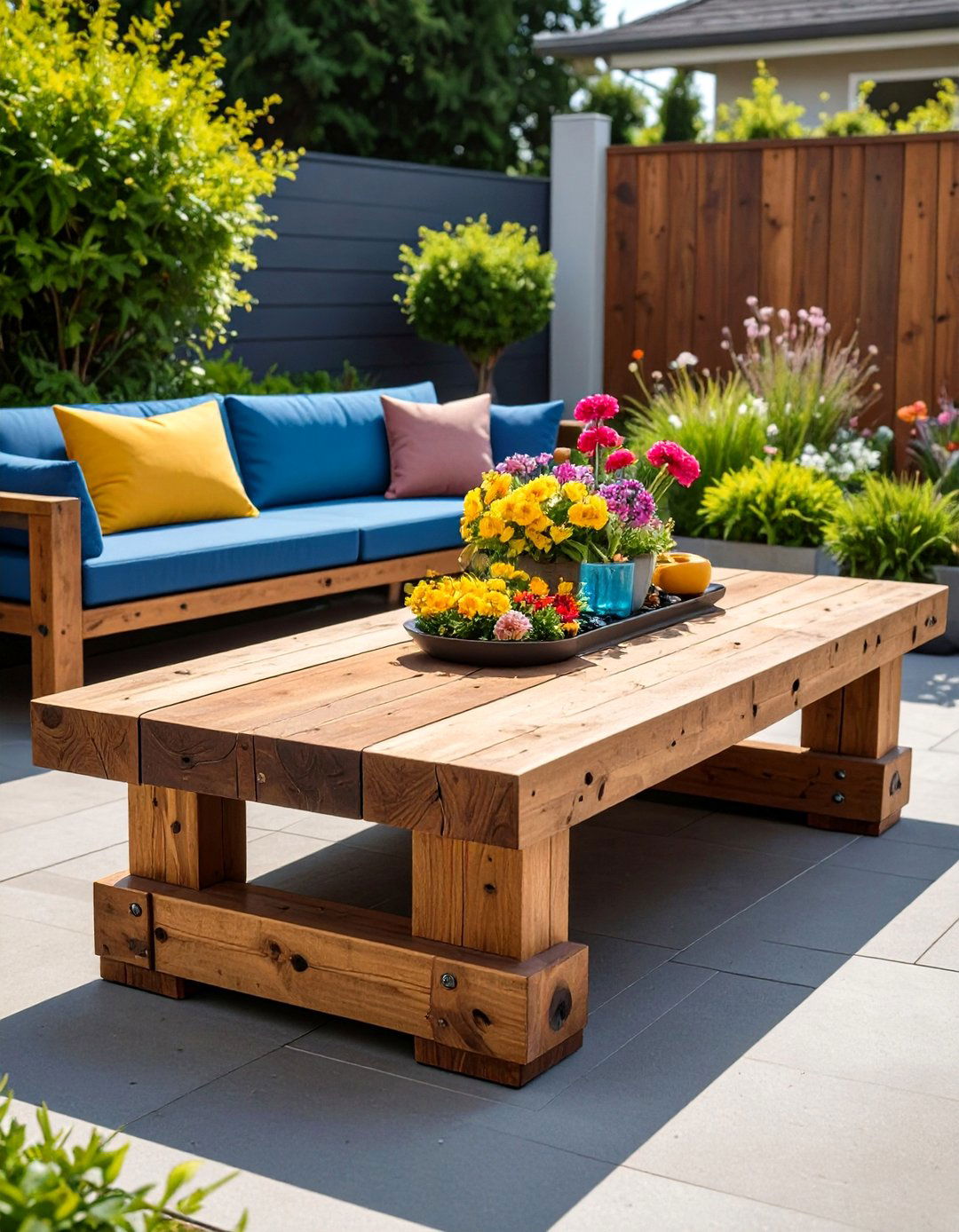
Reclaimed railway ties trimmed to coffee-table length make weather-proof centrepieces on patios. DIY articles on up-cycled outdoor furniture recommend sanding tops smooth, adding hidden felt pads to avoid scratching pavers, and finishing with matt varnish for an industrial-chic vibe that pairs with rattan or pallet sofas.
16. Built-In Sleeper Sofa Edge
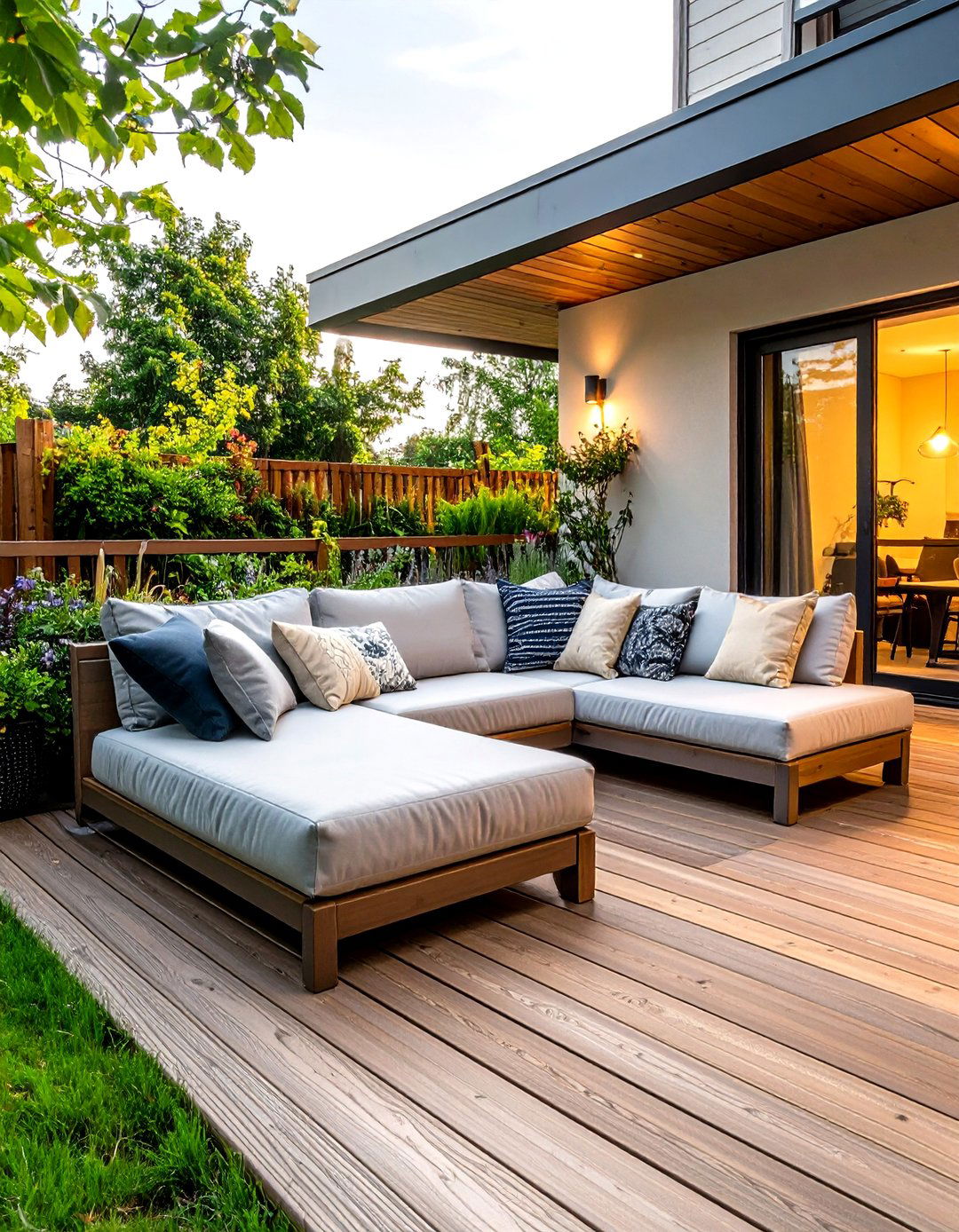
Line the rear of a narrow deck with two sleeper courses, top them with deep seat cushions, and you gain an integrated sofa that doubles as a safety barrier—exactly the approach praised in small-garden makeovers. Anchor the timbers to joists below, drill drainage weep holes, and leave the front face exposed for a cool, architectural look.
17. Decking Access Steps from Sleepers
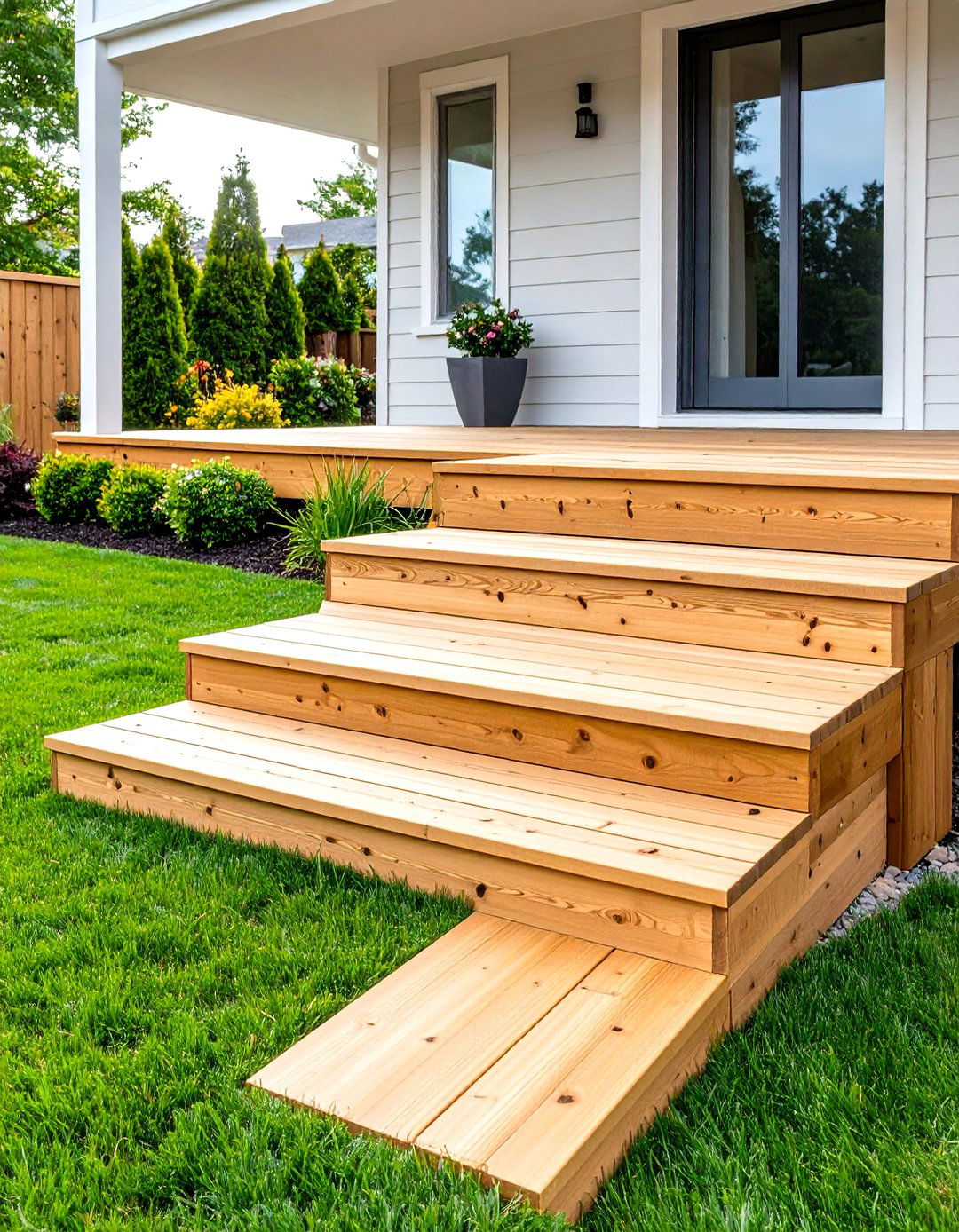
Where decking meets lawn, a single sleeper riser levels the stride and prevents muddy wear. Video tutorials on sleeper steps stress bedding each timber on a mortar pad and fixing risers to screw-piles so frost heave can’t lift them. Match stain tones to the deck boards for a seamless transition.
18. Wildlife Stand & Bird Table Using Sleepers

Off-cuts rarely go to waste: one vertical sleeper pegged into the ground becomes a rock-solid post for a bird table, bug hotel, or solar lantern. Garden idea round-ups cite sleepers’ resilience to nibbling squirrels and winter storms, making them smart supports for wildlife features that invite biodiversity year-round.
19. Short Sleeper Walls to Zone Spaces
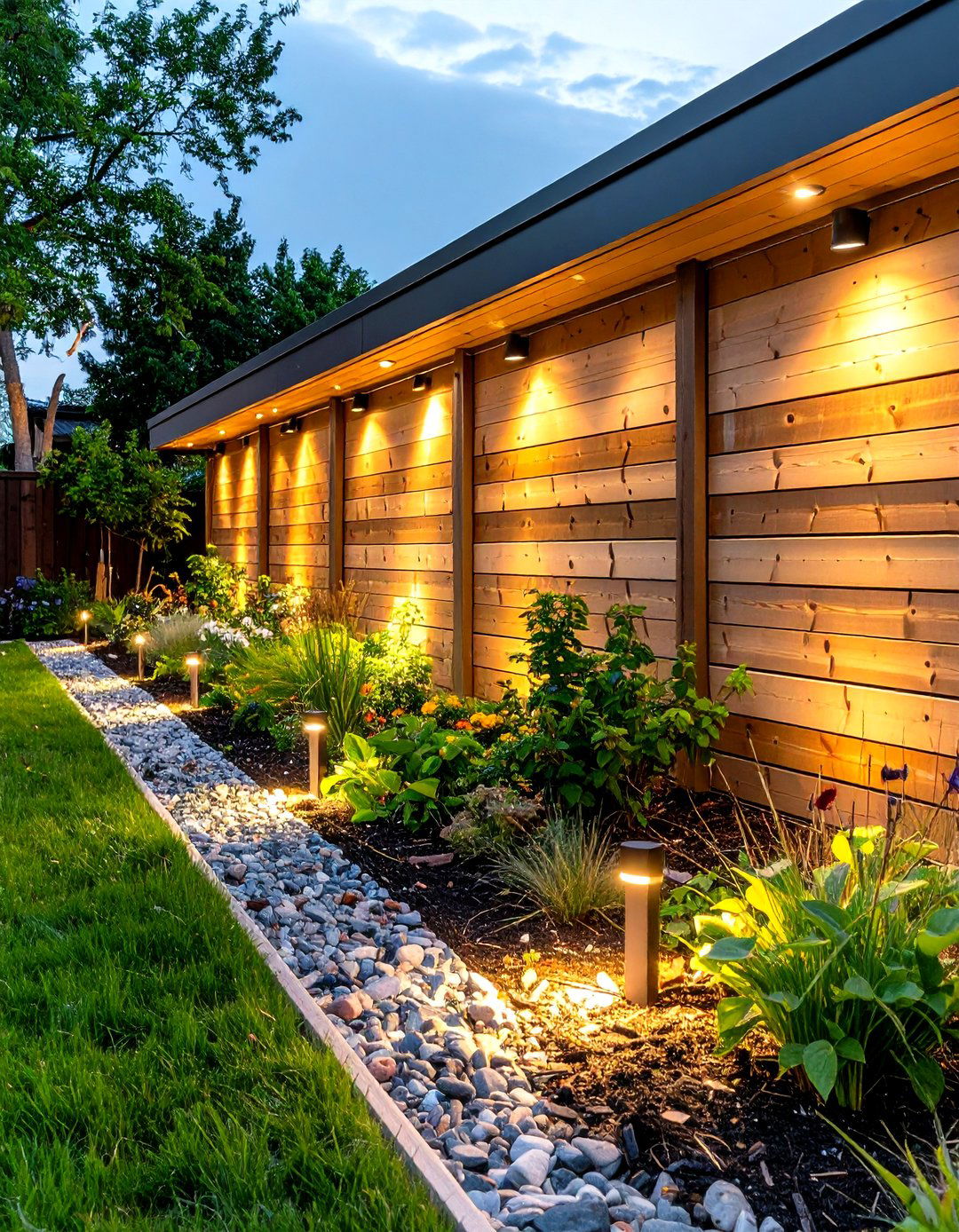
At only one or two courses high, low sleeper walls neatly separate a dining terrace from play lawn without blocking sight-lines. Designers suggest anchoring each section with steel pins and topping with matching decking oil so colour stays consistent. Add inset LED uplights to accent the timber grain after dusk.
20. Gravel-Garden Sleeper Frame
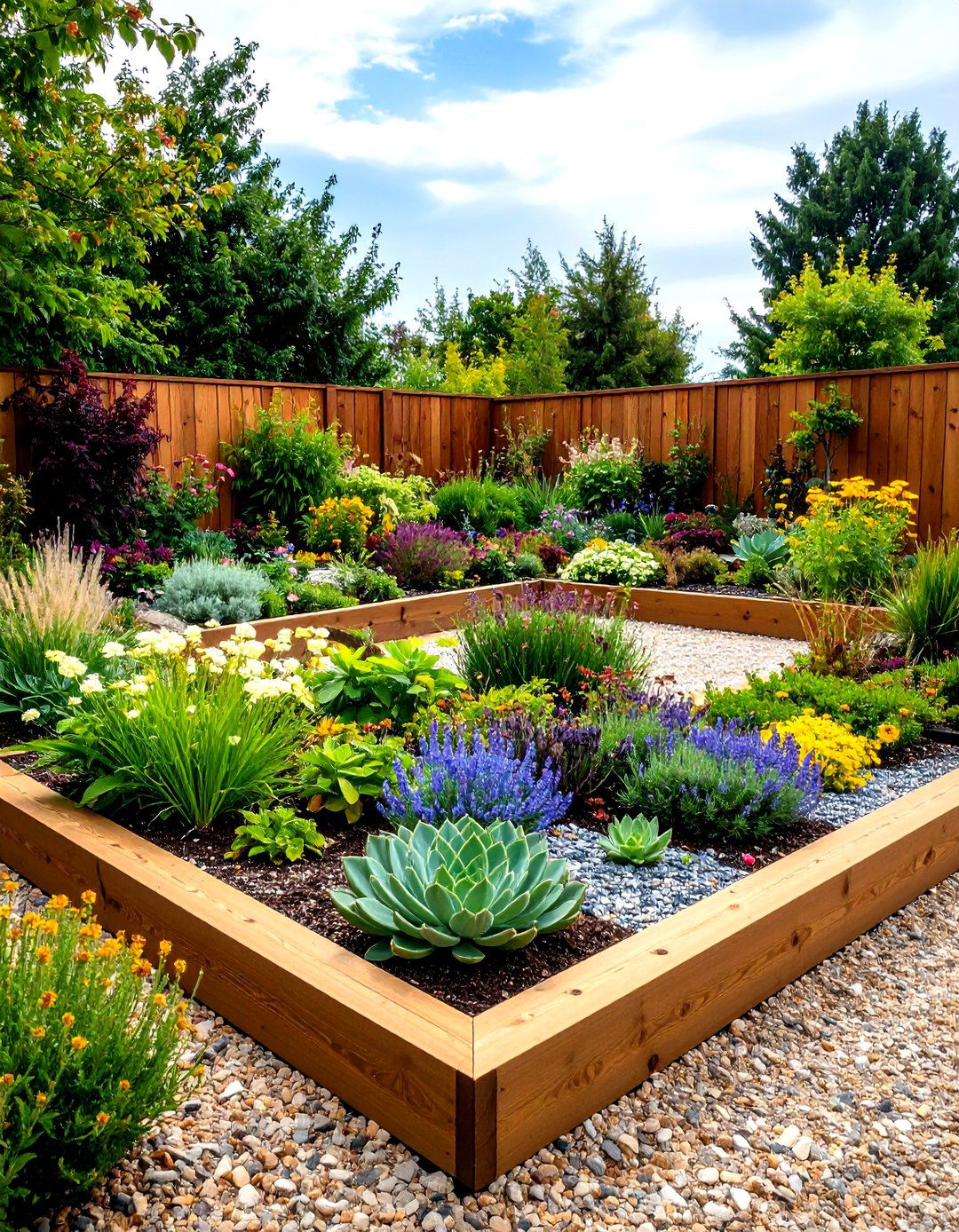
Finally, a single-layer sleeper rectangle filled with alpine gravel and drought-loving sedums creates an almost maintenance-free focal bed. Rock-garden enthusiasts highlight how the timber’s warm hue offsets silver foliage and stops gravel migrating into grass. Drill discreet drainage holes at each corner and tuck low LED spikes among the rocks for night-time sparkle.
Conclusion:
Garden sleepers prove that smart landscaping doesn’t need specialist trades or endless budgets. Their heft builds raised beds, steps, seating, paths, water features, wildlife supports, and more—often in a single weekend with basic tools. Treated softwood keeps costs low, reclaimed hardwood adds ready-made patina, and a yearly coat of eco-oil ensures every beam stands strong against weather and wear. By mixing ideas—perhaps framing a gravel garden, edging a terrace, or bolting up a pergola—you’ll weave cohesive structure through the plot and uncover fresh corners to sit, grow, and gather. Let these sleeper ideas spur you to pick up the saw, measure twice, and craft a garden that feels both grounded and gloriously individual.


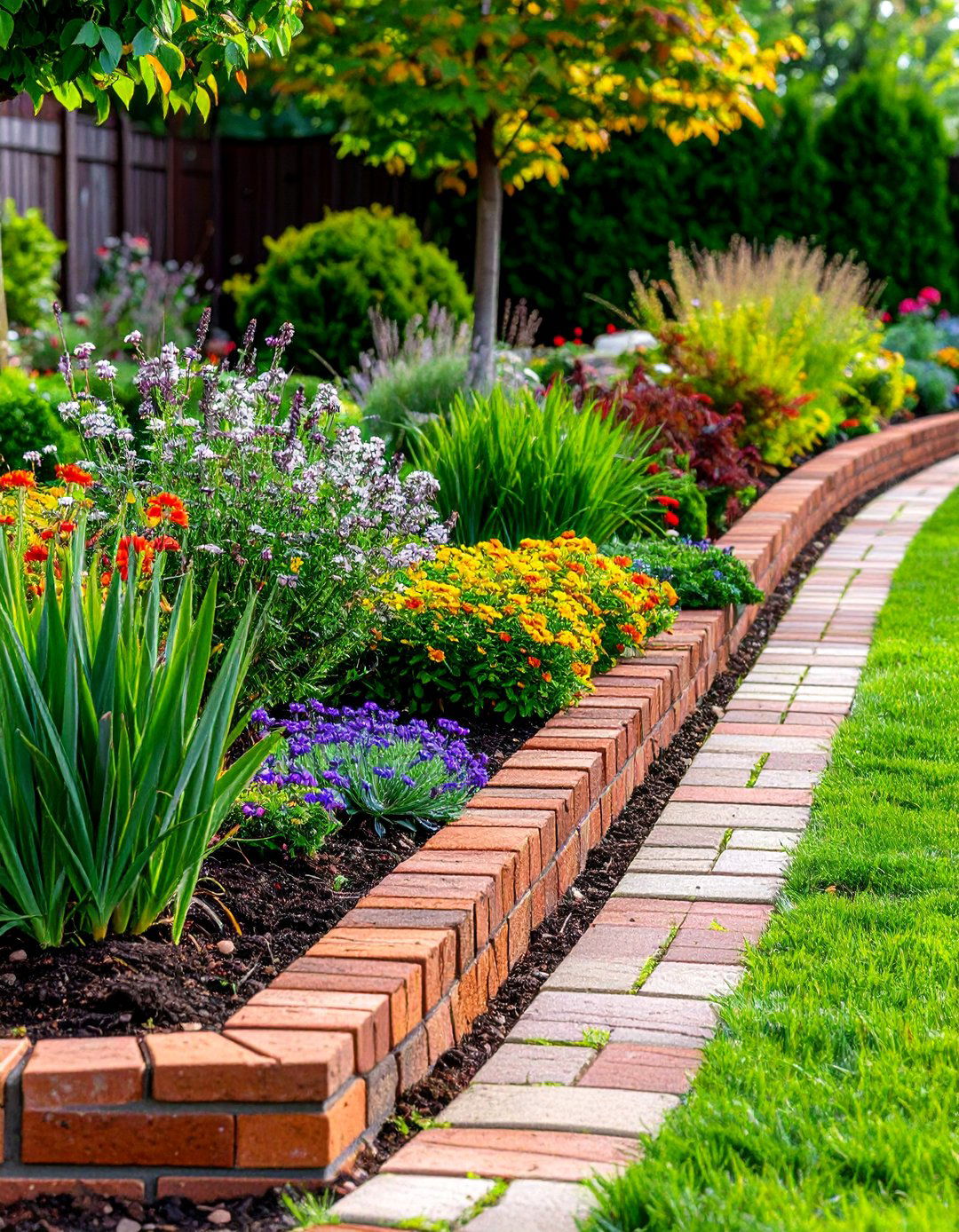
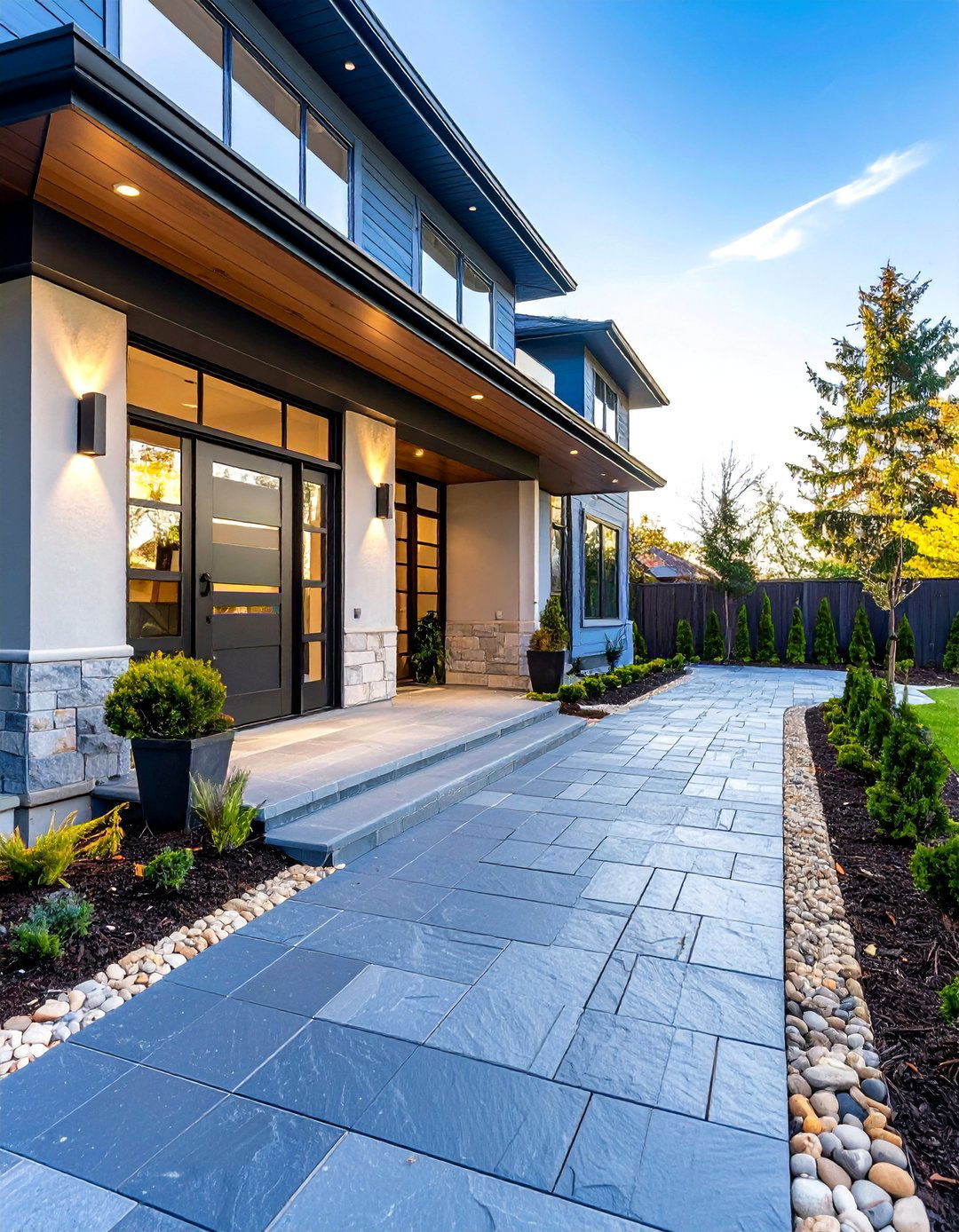
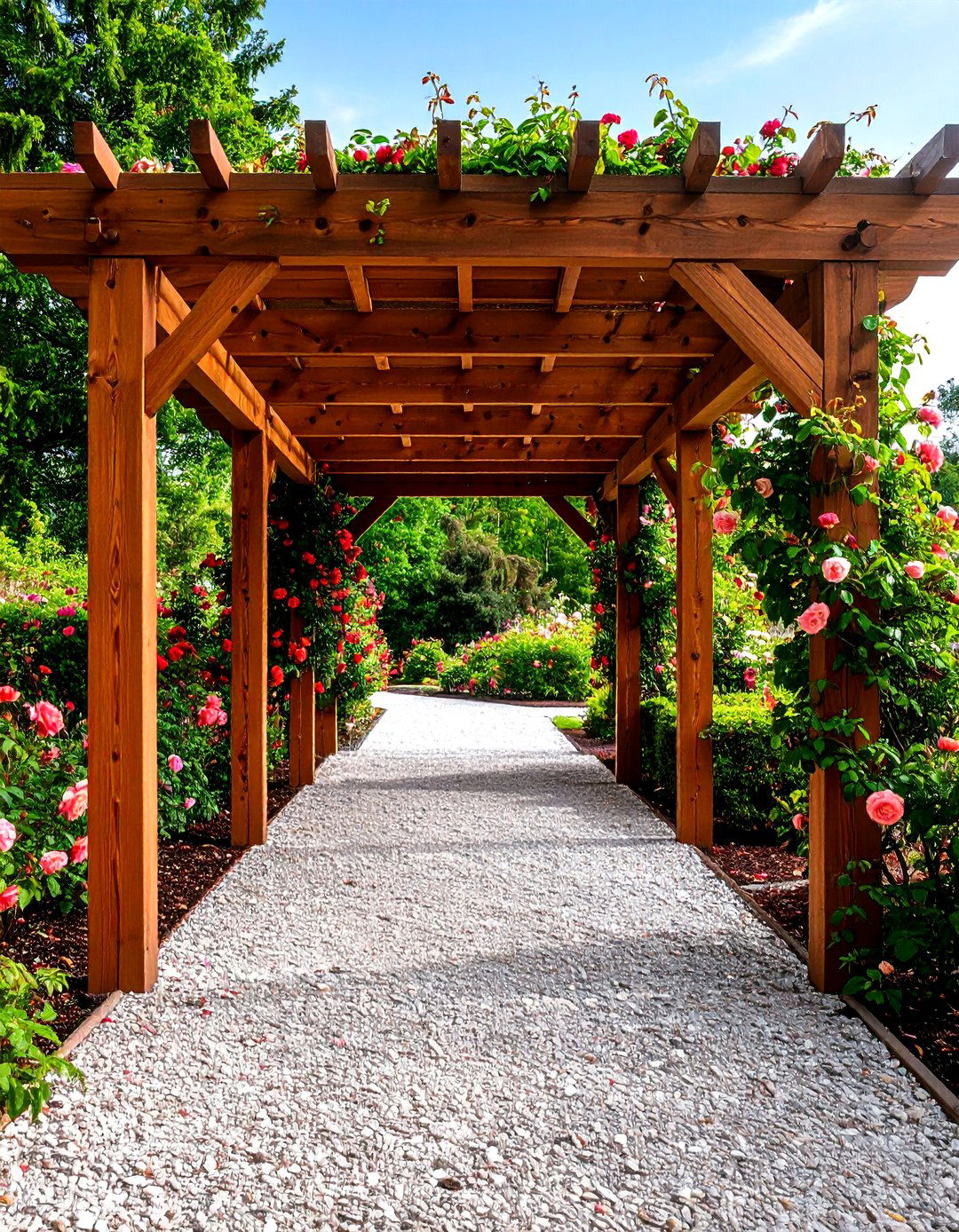
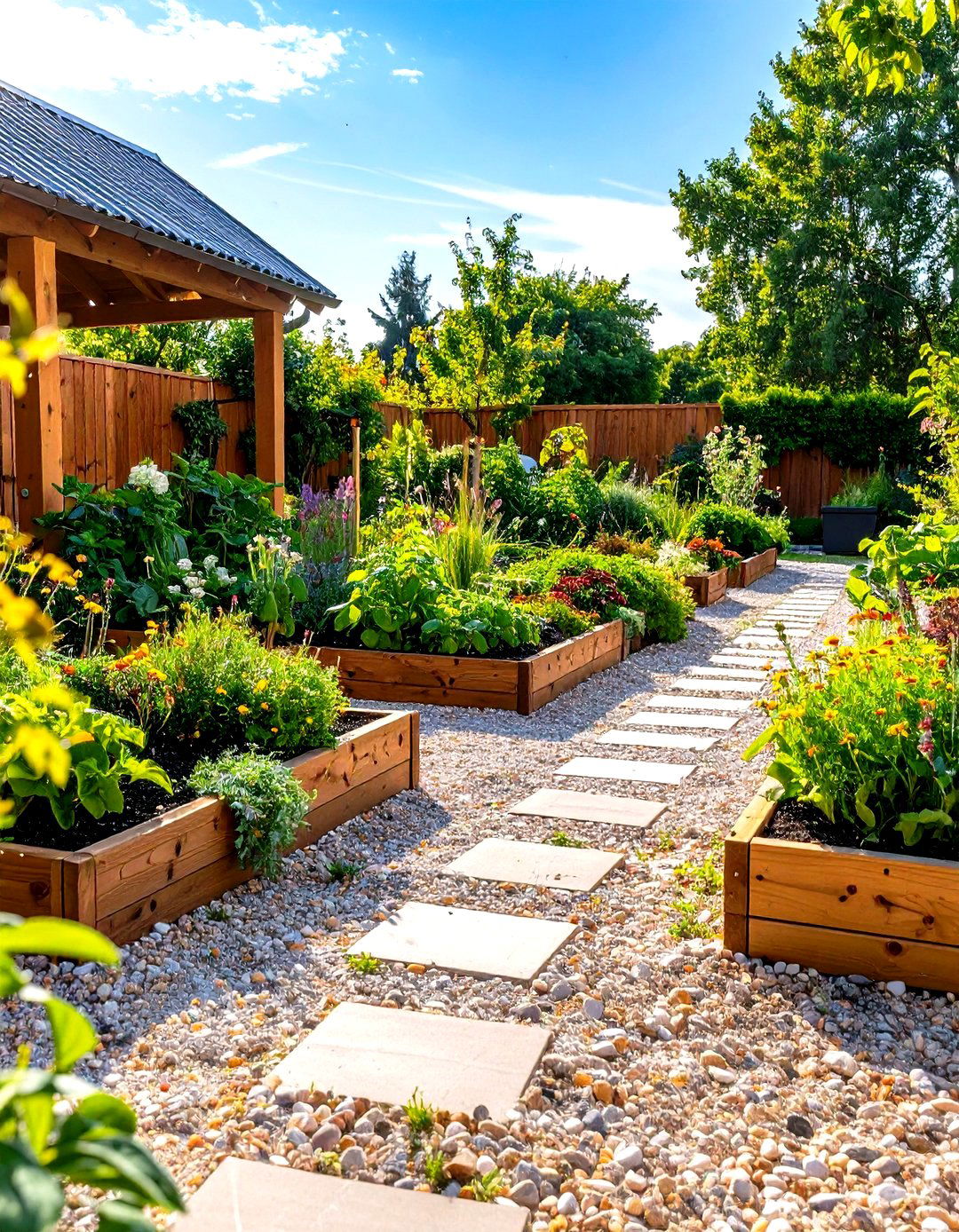
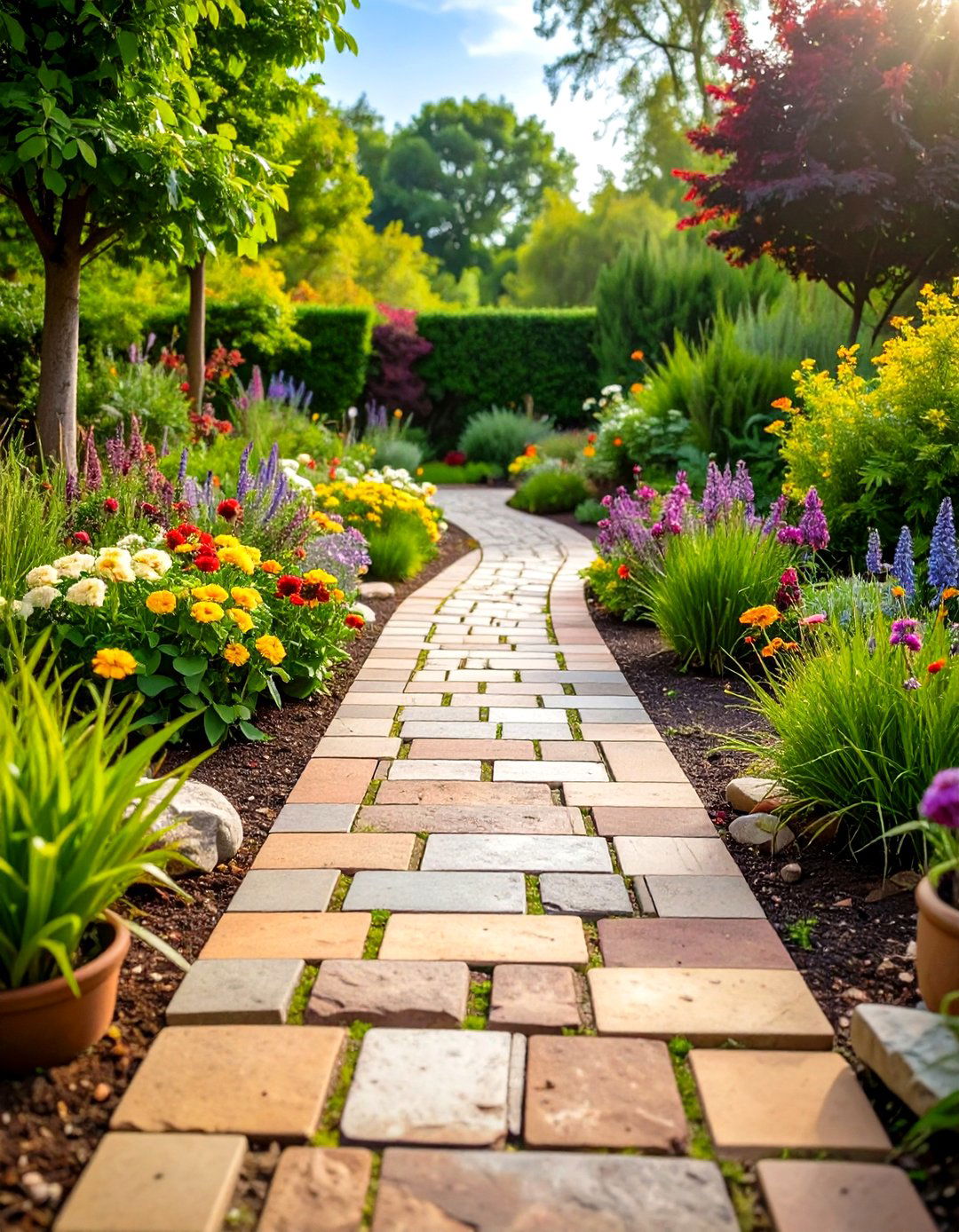
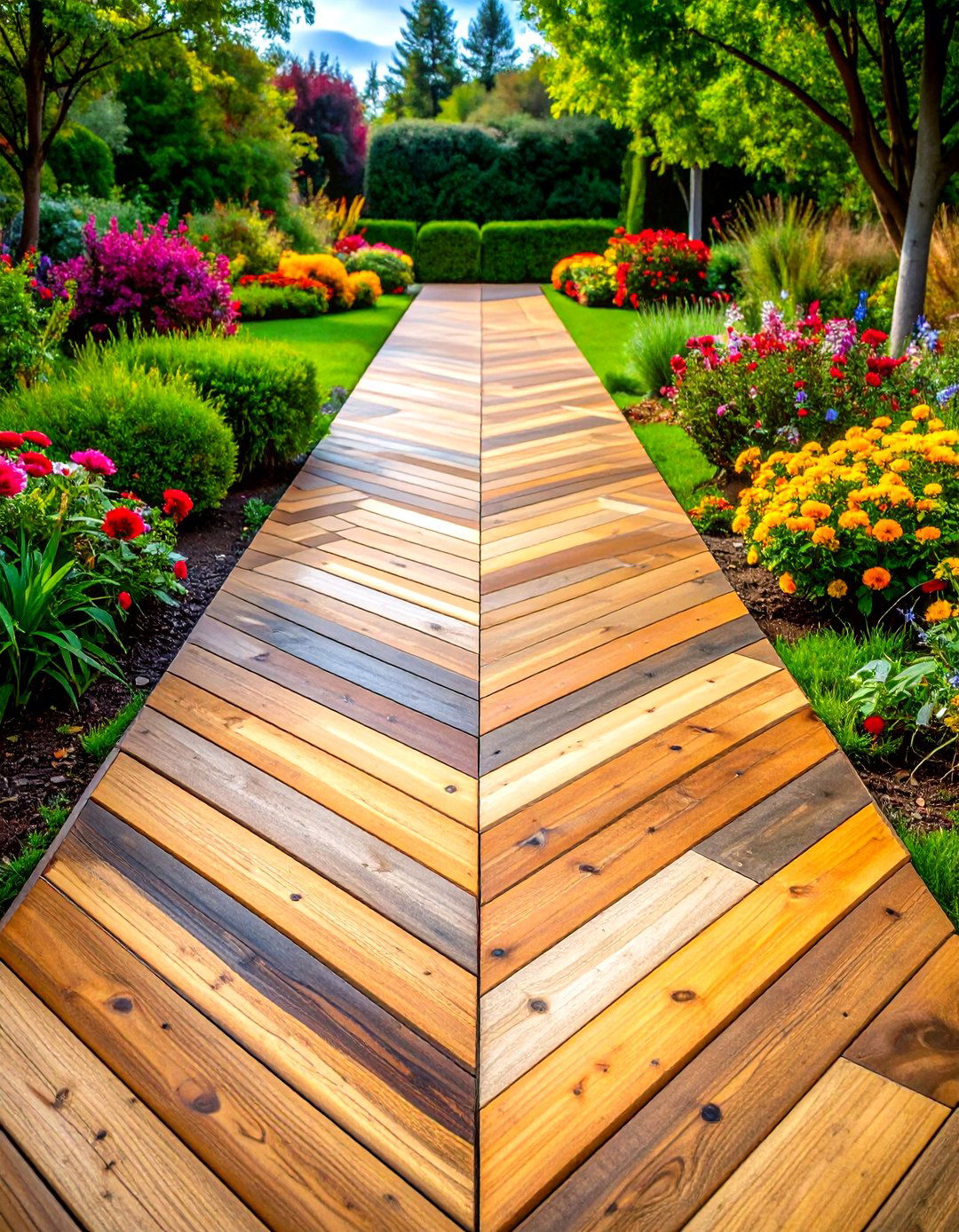


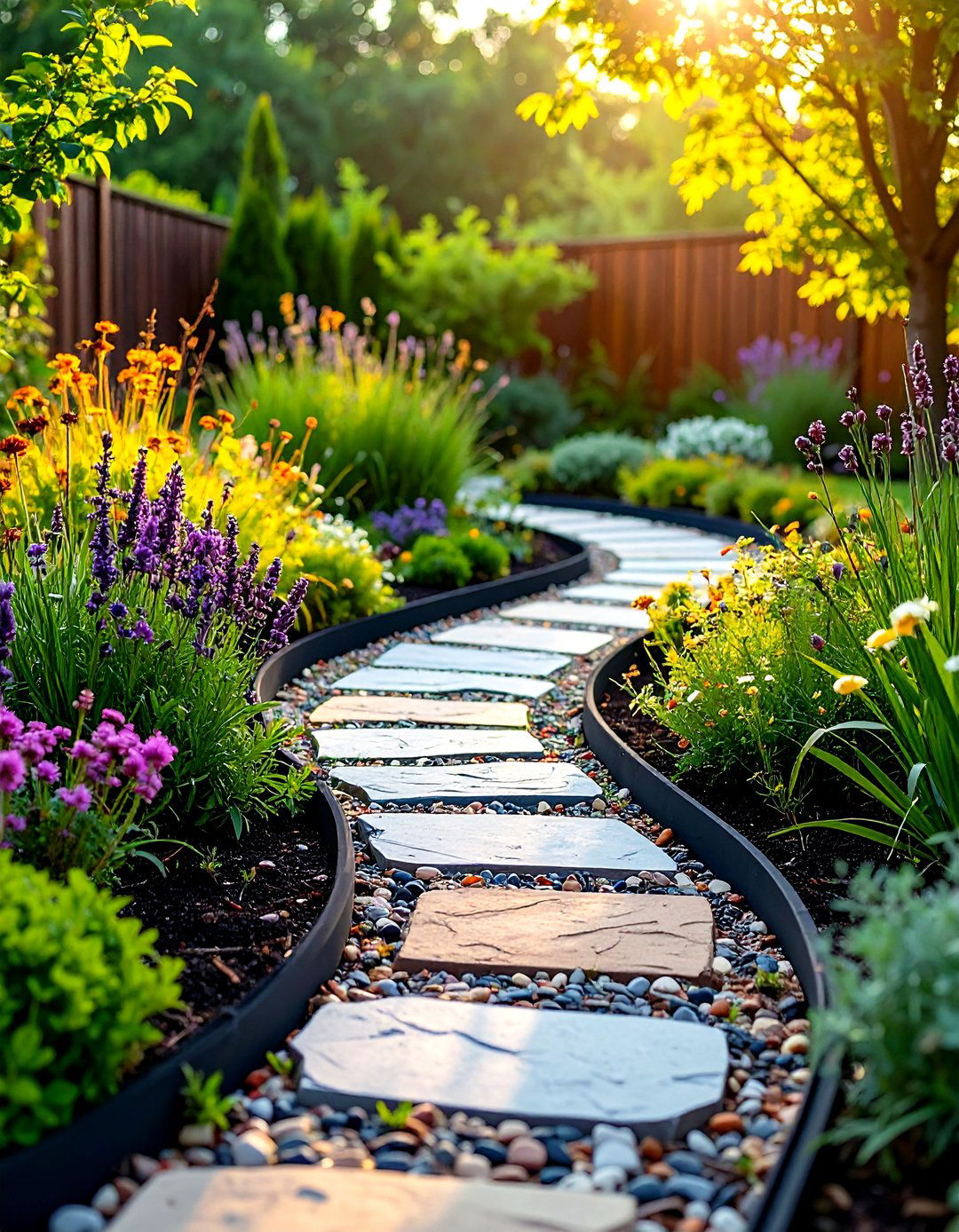
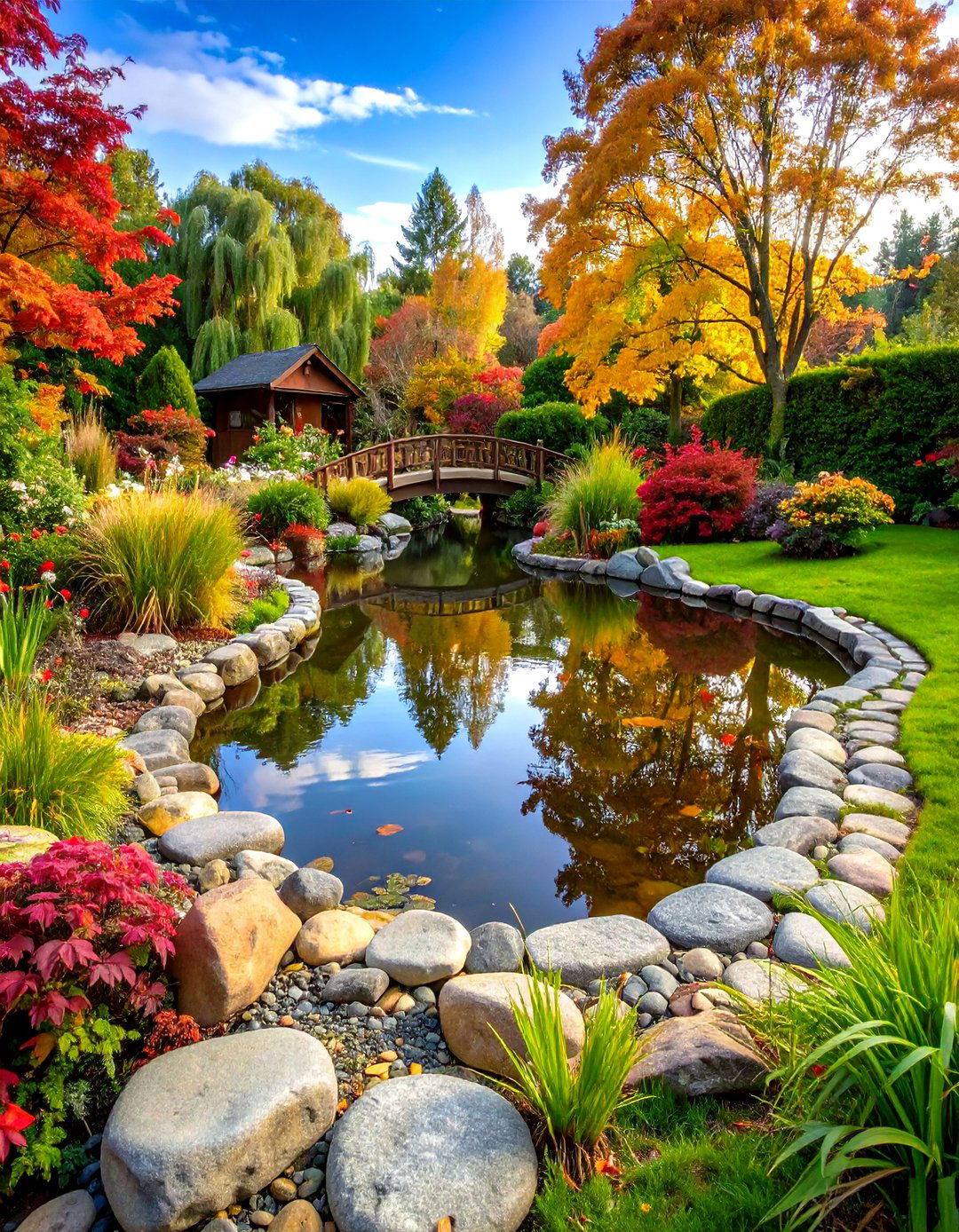
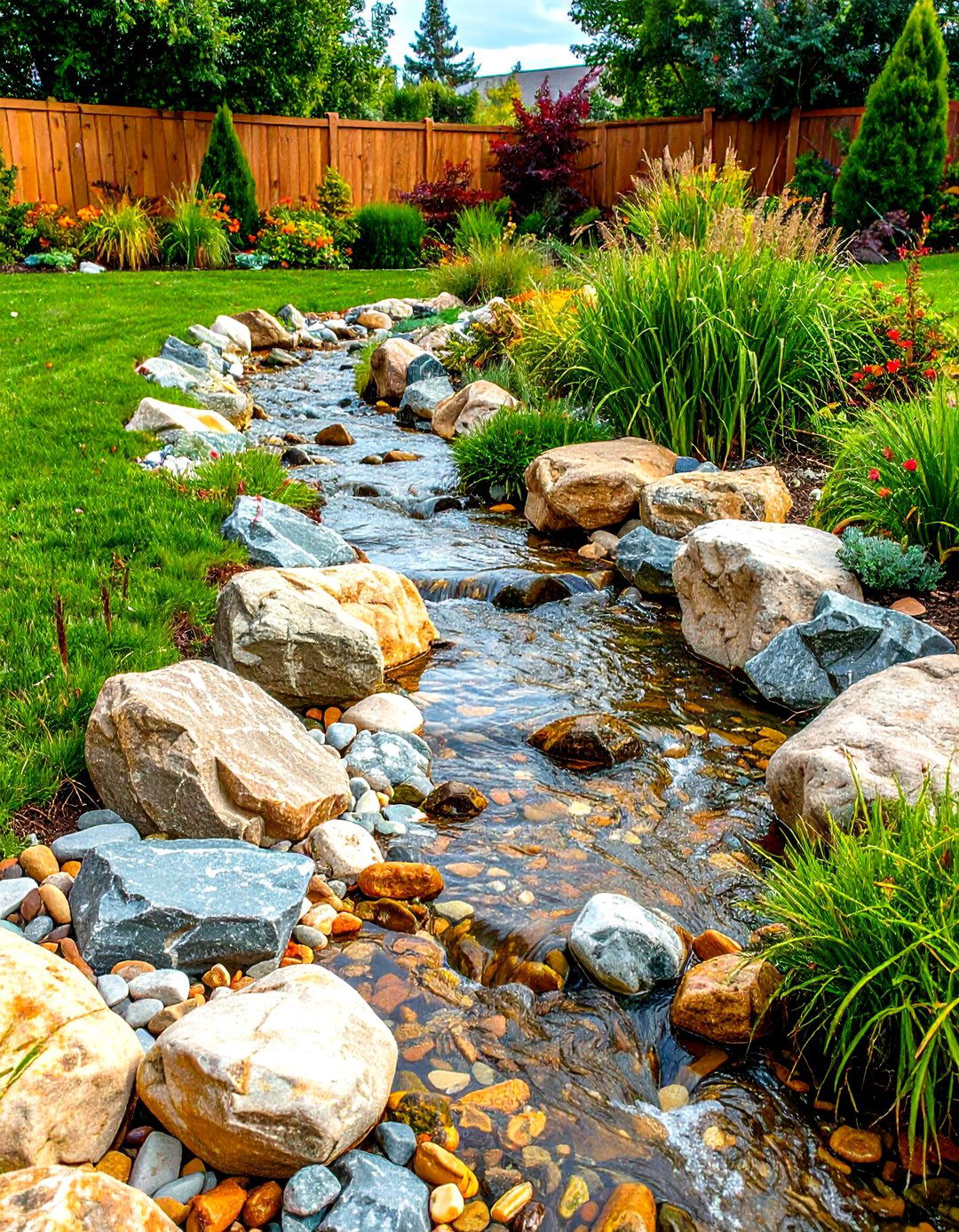

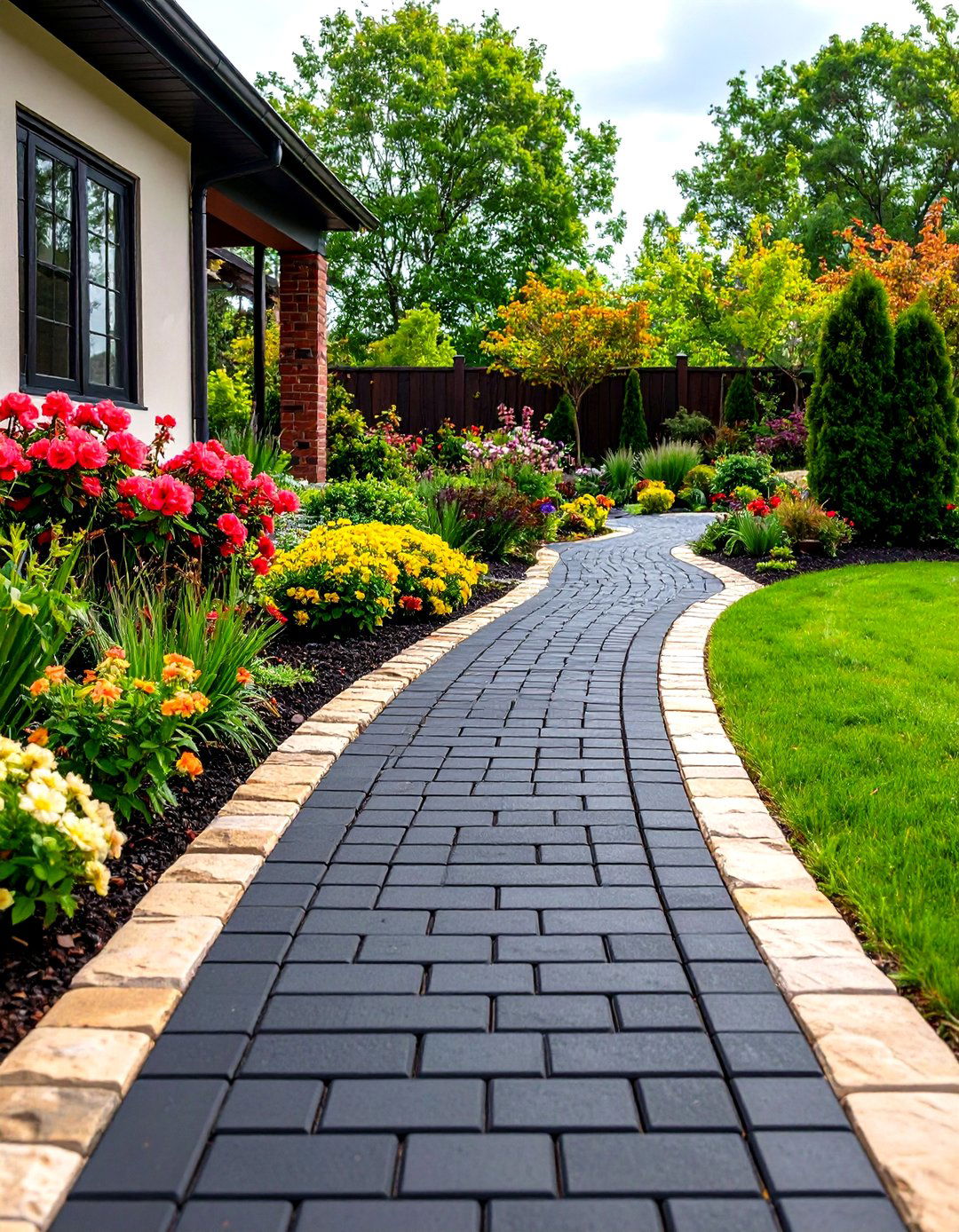

Leave a Reply